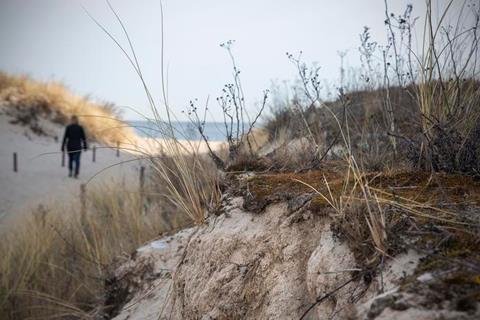A new species of algae, demonstrating its incredible resilience to extreme environmental conditions including cold and light, is identified in the Baltic Sea and Arctic tundra. Its unique property could be applied to potential cosmetic product manufacturing.
The new species Streptofilum arcticum is closely related to its sister organism Streptofilum capillatum, a tiny green ground-covering alga. Only when aggregated as a biofilm, the algal mat becomes visible to the naked eye in dunes along the Baltic Sea or Arctic tundra.

Streptofilum capillatum itself was first described by the same team just a few years ago from agricultural soil and represents a new lineage in the plant evolutionary tree. Remarkably, this alga is an evolutionary precursor to modern plants and can be considered a living fossil. Streptofilum belongs to the most primitive algal representatives within the streptophyte lineage, which is directly related to land plants. It originates from the era when freshwater algae colonized land. Evolutionary innovations were necessary to survive terrestrial challenges such as drought, extreme temperature fluctuations, and UV radiation. These adaptations ultimately gave rise to plants.
Cell functions protect algae from drought
“These algae potentially have an exceptionally flexible cell wall, which differs significantly in fine structure from those of other green algae. We demonstrated this using electron microscopy. During water scarcity, the cell wall shrinks; when water is available again, the wall expands, allowing the cell to rehydrate without damage. This function explains the evolutionary transition of these algae from water to land,” explains Junior Professor Karin Glaser from the Institute of Biosciences at TU Bergakademie Freiberg.
READ MORE: Study tracks algae species interactions to help predict harmful algae blooms
READ MORE: Scientists reveals how tiny algae shaped the evolution of giant clams
The cell functions also enable Streptofilum to adapt to extreme environmental conditions: The algae survive in dry, cold Arctic soils and can reactivate rapidly after droughts. They are also remarkably resilient to light and temperature, thriving under both low light and intense UV radiation, with a temperature tolerance range of 5 to 40°C. This allows the algae to tolerate climate fluctuations and likely withstand future challenges.
Potential applications in eco-friendly products
The research team has identified the algae in the Arctic tundra near Svalbard and in sand samples from the Baltic Sea coast near Heiligendamm. “The broad regional distribution surprised us; these algae are more widespread than previously thought,” says Glaser. The team now aims to investigate where else the species occurs and how its unique cell functions can adapt to rising global temperatures.
These findings, published in the journal Environmental Microbiology, not only enhance our understanding of land plant evolution but could also inspire new biotechnological applications. For example, algae-derived UV-resistant compounds could be developed for eco-friendly sunscreens that avoid harming corals and marine ecosystems, unlike current chemical ingredients. “These algae produce mycosporine-like amino acids, which protect them from UV radiation. Understanding their function is a key foundation for potential applications in cosmetic products,” highlights Junior Professor Karin Glaser.
Topics
- Algae
- Climate Action
- eco-friendly sunscreens
- Ecology & Evolution
- Economic Equality
- Environmental Microbiology
- Karin Glaser
- mycosporine-like amino acids
- Ocean Sustainability
- Personal Care Product & Cosmetics
- Research News
- Streptofilum arcticum
- Streptofilum capillatum
- Structural Biology
- TU Bergakademie Freiberg
- UK & Rest of Europe







No comments yet